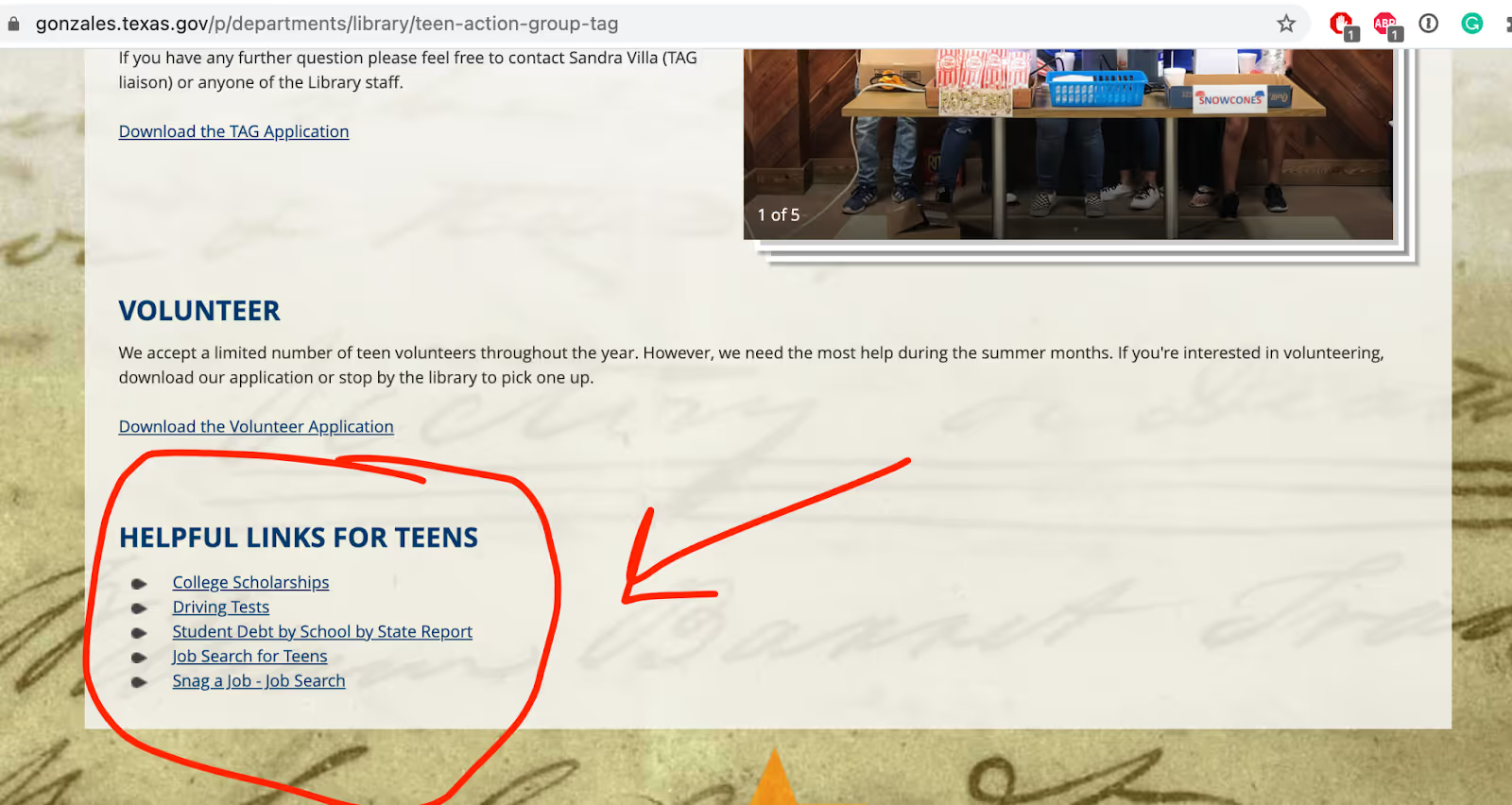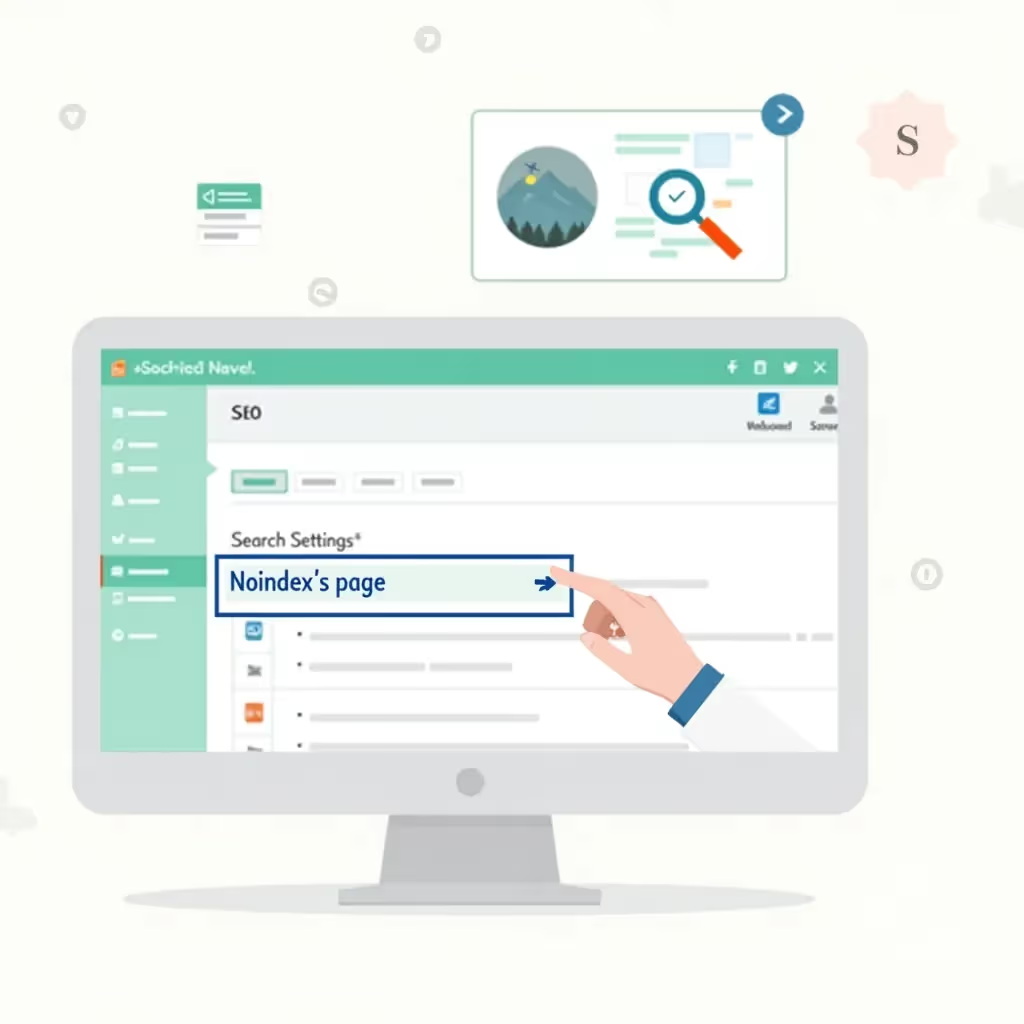A couple of weeks back, I wrote this post about how I grew a B2B SaaS blog to 200,000 visitors per month with search engine optimization (SEO). In the post, I included a small section about backlinks. I wrote that most content marketing teams and early-stage companies shouldn’t worry about backlinks in the beginning. But since then, I’ve chatted with a bunch of founders who had questions about how to build backlinks.
So over the weekend, I wrote this follow-up post about building backlinks, including the four strategies to use and the strategies to avoid.
I’ve used these strategies to build thousands of backlinks, including links from almost every major press outlet — such as the Wall Street Journal, the New York Times, and the BBC — as well as from hundreds of colleges (such as Stanford and Cambridge) and governmental organizations (such as the U.S. State Department and Texas.gov).
I hope that this 3,500-word post is helpful! Let’s dive in.
What Are Backlinks — and Why Do They Matter?
You hear a lot about the importance of backlinks. But what is a backlink?
A backlink is simply a hyperlink from one website to another website. For example, Y Combinator is linking to ContainIQ’s (my previous company) website on our public company page (thanks, YC).
When Google was founded, it introduced the concept of PageRank. PageRank was an algorithm that determined a website’s authoritativeness and trustworthiness. The more backlinks a website had, the higher its PageRank score was, and to Google, this was a sign that the website was an important source of information. Websites, or pages within websites, with a higher PageRank score would appear higher in search results.
Google figured that if other websites took the time to review your content and place a link to your website, your page was probably a good source of information on whatever topic it addressed.
Over the years, the concept of PageRank evolved, and Google eventually retired its public PageRank toolbar. Today, you’ll hear a lot about domain authority. Domain authority is similar to PageRank in that it’s a calculation of your website’s authoritativeness.
Today, Google’s algorithm is more reliant on natural language processing and user metrics (for instance, bounce rate) and has become a pretty good judge of the value of content.
That being said, while Google’s algorithm has evolved, there’s no doubt that backlinks still impact the rankings of a website or a given page on a website.
I like to think of backlinks as getting your website in the running. You can earn a place to run in the Boston Marathon with a fast qualifying time in a previous race. Similarly, Google uses backlinks as a starting point to judge whether your website should be in the race at all.
In categories where a search result can have a big impact on someone’s life (like money or health), backlinks are even more important in getting your website in contention to rank on the first page of search results.
By building backlinks, you’re supporting the case that your website is an authority on its topic and that it is likely a good source of information.
The good news is that most of the readers of this article likely already have some backlinks. For example, if you are a YC-backed startup, you have a link from YC, a link from the press around your launch (for instance, from TechCrunch), and likely at least one from your investors who have portfolio pages. This is a fantastic starting point and is likely good enough to show Google that your company is a real company.
But for companies in highly competitive industries, building additional backlinks with relevant anchor text can help to increase search rankings over time and drive more traffic to your website, which in turn can lead to more customers and revenue.
4 Scalable Strategies for Building Backlinks
.avif)
In this section, I’ll walk you through the four different strategies I’ve used to build high-quality backlinks at scale:
- Data-Driven Content
- Guest Blogging and Contributed Content
- Resource Pages
- Link Bait
1. Data-Driven Content
In 2016, I read this fantastic article from Priceonomics (W12) called “The Content Marketing Handbook.” At the time, Priceonomics was the leader in creating interesting stories using data (such as surveys, licensed data sets, and free data sets), and I knew that their process could be leveraged for virtually any product, including my previous company, which marketed financial products (ex student loans).
A week after reading Priceonomics’ guide during our W16 YC batch, we created a survey that asked students common knowledge questions about their student loans. It turned out that students really didn’t know anything about the subject, despite the vast majority of them having loans and increasing balances.
Overnight, our story went fully viral, getting coverage from media outlets like CBS News, Bloomberg, and the New York Post. And in the process, we accumulated almost 100 highly relevant and authoritative backlinks. In comparison with developing guest posts, which was a very manual process and would lead to one link at a time, we realized that creating data-driven content was a far more scalable strategy and would require us to write only one piece of content.
In my experience, creating data-driven content is the most scalable way to create backlinks. Here, I’ll quickly recap the process we used for an article about Venmo transactions, which received coverage from outlets like the New York Post, MarketWatch, and Mental Floss.
Step 1: Find Interesting Data
Interesting data can come from a variety of sources. As a starting point, I always suggest looking at unique internal data your startup has. From there, you can create surveys and polls, license datasets, and use open-source data.
For surveys and polls, I’ve used a large number of companies, including Pollfish (no affiliation).
For licensed datasets, I’ve licensed from companies like Experian (no affiliation).
And for open-source datasets, I’ve found that state and federal governments release a ton of great data. I’ve used data from the U.S. Census Bureau, the FBI, state lotteries, and many more places. There are also plenty of open APIs that you can use, including, in the past, Venmo.
Regardless of the type of data, you’ll want to make sure that your dataset is big enough to be credible. For example, if you’re doing a survey, you’ll want to survey at least 500 people, and ideally more than 1,000 people, for your dataset to be accurate and seen as accurate.
You want your dataset to be somewhat related to your company’s primary business and product. In my example, Venmo payment transactions were somewhat relevant to our company which was in the personal finance space.
We would have avoided topics where there wasn’t some small amount of relevance. This is important because you want the links that you build to be relevant to your website’s topic. These links help show search engines that your website is an authority on that topic. In our case, the topic was personal finance.
Step 2: Tie Data to a Narrative People Are Already Talking About
After doing well over 100 of these articles, we realized that the best-performing articles were articles that tapped into a topic that people were already writing about.
It’s much easier to get journalists to write about your data if they’re already writing about your narrative. You should try to pick a theme that resonates with a conversation that’s currently happening.
For example, we released the Venmo study during fantasy football season. We knew that Venmo users were using Venmo for fantasy football. And we timed the release of our study to coincide with the start of the NFL season.
As just another example, we had a lot of success doing studies about student loan trends. We’d try to release these studies during graduation season.
Step 3: Create an Article Including Interesting Graphics
After you’ve found compelling data, the next step is to create the piece of content.
We wrote reports ranging from 700 words all the way up to tens of thousands of words. In most cases, you can keep your report short — 1,000 to 1,500 words — and let the data speak for itself. You are really pitching the data here and not the article you write about the data. It can be helpful to add a bulleted Key Takeaways section that recaps the most interesting pieces of data.
You should try to take a scientific tone and include a methodology explaining how your data was collected.
And if possible, you should try to create engaging images to include in your post.
It goes without saying, but you should hire a freelance editor to review the content before it goes live. Even small spelling and grammar mistakes can hurt the credibility of the entire article.
Step 4: Pitch Reporters and Journalists
Every day, there are hundreds, if not thousands, of journalists who need to write something. Your job is to make it as easy as possible for them to write an article about your data.
Start by building a list of 50 to 200 journalists in your space. In our case, there was no shortage of personal finance journalists. There are a number of tools you can use to find and build lists of relevant journalists. We used Meltwater (no affiliation), but there are a ton of tools out there.
After you’ve built the list of journalists, the next step is to write a compelling email. Here is an example of a pitch I would have written for a study on Venmo transactions:
Hey {insert name},
Hope your week is going well. I just wanted to let you know that we released some really interesting data this morning. By using the Venmo API, our CTO analyzed 500,000 Venmo transactions to find out what people are using the app for.
The data is surprising. It turns out that people are using Venmo primarily for drinking and gambling (including fantasy football).
In our report, we broke down the full analysis and results. You can find that report and accompanying graphics here: {link goes here}
We’d love to get your thoughts. And we’d be happy to give you a few more interesting insights and quotes if you’d like to write an article about our data. We could also make custom graphics for {insert name of media outlet} if that would be helpful for your readers.
Best,
Nate
Just like outbound sales, pitching journalists is a numbers game. The key is getting just one mainstream media outlet to write about your report. After that, all of the other reporters will naturally follow and copy each other, which results in you getting lots of links.
And, oh, if in their article they forget to add a link back to your study, ask them to add one, and they usually will.
You’ll want to publish and pitch your article on Tuesday, Wednesday, or Thursday. Avoid pitching on Monday or Friday or over the weekend.
Step 5: Repeat
You can repeat this process again and again. Creating the first article is the hardest part. But then you’ll learn the process, build relationships with reporters, and get a better sense of what could go viral.
Here are a couple more examples:
- How Much Do Americans Spend on the Lottery? We used free, open-source data from state lotteries directly. This was a great one because every time the lottery jackpot got big (for example, when Powerball hit $1b), we’d get continued coverage and more links.
- Dirty Money: New Research Reveals the Filthiness of Our Cash, Cards & Coins. We purchased a high-grade germ detector and found out how dirty cash and credit cards were. It turns out that credit cards are dirtier than a New York Citi Bike and a Penn Station bathroom.
2. Guest Blogging and Contributed Content
Guest blogging is one of the oldest link-building strategies out there. Done in moderation, guest blogging and contributed content are fantastic ways to build relevant links.
Guest blogging simply means writing a piece of content for another website. You are a guest writing a blog post. Contributed content is similar, although this term is often used when you write a piece of content for a traditional media outlet (such as TechCrunch).
For startup companies, I’d start by looking through other companies relevant to your space or companies where you have a mutual investor. And obviously, you want to look for companies that have blogs!
When writing a guest post, it’s best to pick a topic that is relevant to both your company and to the receiving company or website.
I always suggest pitching two or three topics when you reach out about a guest blogging collaboration. And similar to outbound sales, you won’t get a conversion on each email that you send. You may need to send three to five pitches to get one guest blogging opportunity.
Similarly, when looking for traditional media outlets to contribute to, you’ll likely need to pitch multiple editors to secure a writing opportunity. I’d start by looking for industry-specific news websites or general technology-focused outlets.
For example, at ContainIQ, I’ve written guest blogs for a number of YC companies, including Explo and Hydra. (Thanks!)
And we’ve written and contributed content for Container Journal and VentureBeat.
Don’t be surprised if there’s some back and forth during the pitching or editing process. And when your article is eventually published, be sure to share it around on LinkedIn and so on.
Guest blogging and contributed content should be done in moderation. Google has clamped down on the practice in recent years. It’s a safer strategy to use at scale when used alongside the other strategies mentioned in this article.
3. Resource Pages
We’ve all seen them — the generic, bulleted resource pages found on websites everywhere. You might have one on your website.
Building backlinks from resource pages is a simple but effective strategy. And this strategy can be used in almost any niche: resources for students, resources for getting better sleep, resources for engineers looking to learn to code, and so on.
Here is an example of a resource page for the Teen Action Group in the city of Gonzales, Texas:

Building backlinks from resource pages is very similar to booking demos from outbound sales. The first step is to collect a list of resource pages on websites in your industry or related to your industry. The second step is to email the companies or organizations and ask them to place a link to your page — typically a piece of content or guide you’ve created — in its list of resources.
As seen above, the Teen Action Group (TAG) has a fantastic resource page for teens on the Gonzales website. We reached out to see if they’d be open to including a link to one of our resources for teens. They said yes, and added our link.
I’d usually start this process manually by using search modifiers to find relevant pages ranking in Google search. For example, you could build a list of 100 resource pages for students in engineering departments at colleges and universities. You’d then want to find the correct contact information for the person(s) responsible for this resource page. In the example above, we see that this page is managed by the city of Gonzales’s library department. I found the director’s email address on the page here:

This entire process can largely be outsourced to Upwork freelancers. And it’s largely a numbers game. At the end of the day, you’re just asking people to add backlinks to your help resource, and many people will be happy to do so.
Again, this is only one tool in your tool belt. Adding links to resource pages should be done in moderation. And again, this is a safer strategy to use at scale when used alongside the other strategies mentioned in this article.
Pro Tip: You can also use Ahrefs (no affiliation) to find resource pages. If you have a competitor in your space that is actively building resource page links, you can use the Backlinks tool in the Site Explorer on Ahrefs to find them. You can then build a list of these pages and start your own outbound process. You’ll find that if a website is willing to add a backlink to a competitor’s page, they’ll probably be more likely to add a link to your webpage, too.
4. Link Bait
Creating “link bait” is one of the easiest ways to build links over time. Link bait is a piece of content that you’ve created to accumulate links organically; the content is often in the form of reference material or statistics.
Here are a couple of examples of Link Bait:
- 26 Kubernetes Statistics to Reference: We compiled a list of statistics about Kubernetes. When reporters Google “Kubernetes statistics,” we rank number one. And what ends up happening is that reporters or content creators looking for Kubernetes statistics will end up linking to our piece of content as the source of information for the statistics they reference.
- How 8 Giant Companies Use Kubernetes & 60 Others That Use It: As you can imagine, when writing an article about Kubernetes, a reporter or journalist would want to reference companies that are using Kubernetes, often in the introduction of the piece. By creating this list of companies using Kubernetes, we’ve created source material for a journalist to link to when sourcing companies using Kubernetes.
Over the years and across a number of websites, our statistics pages accumulated hundreds of links. These links look and feel very natural and are great for building topical relevance.
Strategies to Avoid
By building high-quality backlinks through the strategies mentioned above, you can build authority and a backlink profile that feels natural.
When building backlinks, you generally want to avoid doing anything that feels unnatural or spammy. There are many ways to build unnatural or spammy backlinks, and most of these strategies should be avoided. Here are a few strategies that I would strongly recommend avoiding (even if your content or SEO agency suggests it).
- Do not buy backlinks. This worked from 2006 to 2014, but buying backlinks today isn’t worth it. Buying low-quality, or spammy, backlinks likely won’t move the needle for you. Google has become incredibly good at identifying paid or promotional links and ignoring them. Even worse, if you buy backlinks at scale, you are setting yourself up for a Google penalty. Yes, it is possible to buy high-quality links that appear natural. Unfortunately, if you’re buying high-quality links, the cost will likely be hundreds, if not thousands, of dollars. At that cost point, you’re better off just doing the work and building the backlinks yourself.
- Do not build scholarship links. Again, this is a strategy that worked a decade ago. But it was spammed to death (for example, The Best VPN Scholarship). Do not launch a company scholarship for the purpose of building .edu links from colleges. Google will ignore these links and/or penalize you for building them.
- Do not buy an expired domain, and 301 redirect it to your site. Natural 301 redirects can be a really valuable tool. For example, if you buy a real company or blog, it would be totally fine to 301 redirect it to your primary domain. But don’t go looking for expired domains as a way to build domain authority unnaturally.
- Do not hire a link-building agency and blindly let them do whatever they want. Yes, it’s possible to hire a link-building agency, but if you go down this path, you need to pay close attention to the links they’re building for you. Do not hire an agency that is just buying backlinks on your behalf.
- Do not buy sponsored content as a way to accumulate links. “Sponsored content” links are almost always nofollow links and won’t pass link equity to you. Not worth it.
- Do not build a link circle. Building a handful of links through guest posting on your friends’ websites is fine. But you want to be careful to avoid creating a link circle (in other words, Site A linking to Site B, Site B linking to Site A, Site A linking to Site C, Site C linking to Site B, and so on). This might happen naturally, but don’t try to game it by doing link exchanges at scale.
- Do not build just one type of link. Remember, Google’s algorithm wasn’t designed for you to be actively building links. When link building, you want to build a link profile that looks natural. You should try to build multiple types of links (including guest posts, press links, and resource page links), and you should avoid just using one strategy over and over again. With the exception of press and media links, if you use just one strategy (such as guest posting) to build links, you’ll create a link profile that feels unnatural.
Final Thoughts
All of these strategies can be scaled if needed. Most startups don’t need to build thousands of backlinks. But for those in very competitive niches, backlinks can be a powerful tool to break out of the sandbox and build authority.
I just want to reiterate that these strategies should be used in combination. Your goal is to build a natural-looking backlink profile. If you build only resource page backlinks, for example, that might not look entirely natural to Google and other search engines.
But if I were to pick just one of the strategies mentioned above, I would pick data-driven content. This is by far the most scalable strategy, and there is nothing better than going viral and accumulating 50 to 100 backlinks in the process. You’ll also build credibility in your industry and drive large amounts of press about your company. There’s no risk to this strategy.
I hope you enjoyed this post. Happy to chat with any founders or content marketing teams who would like to go into more depth. My calendly is here.





